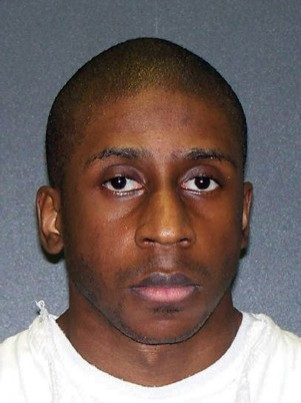Texas Man, Mario Swain, Executed For 2002 Murder of Lola Nixon

Mario Swain, a death row inmate described by prosecutors as “a fledgling serial killer,” was executed Thursday by lethal injection in Texas, the Washington Post reported.
Swain, 33, was convicted of murdering a Texas woman in 2002 during a burglary at her home. He was sentenced to the death sentence the following year.
His attorney, James Volberding, said Swain did not make a last statement or a late attempt to block the execution. Swain was asked by a prison warden if he had any final words, but he simply shook his head no, and closed his eyes, according to prison officials. He was pronounced dead at 6:39 p.m., the Chicago Tribune reported. It was the 13th execution this year in Texas.
According to evidence and testimony from his trial, Swain broke into the Longview, Texas home of Lola Nixon in a planned burglary, two days after Christmas in 2002. Nixon returned home in the middle of the burglary and a struggle broke out. Swain allegedly struck Nixon in the head with a tire iron, stabbed her in the chest and threw her into the trunk of her BMW. Police said that after the burglary, Swain drove her car to a field, about 120 miles east of Dallas, and left her there to die.
Nixon, 44, was a manager at a call center, where Swain had once been employed; however, authorities are not sure whether they knew each other. Friends of Nixon’s had plans to meet her for dinner the night she was murdered, and contacted the police when she did not return their calls the following day, according to several news reports.
When local police arrived at Nixon’s home, they found that the back-door lock had been pried open and blood had been tracked throughout the house. A neighbor of Nixon’s noted that there had been an unfamiliar truck parked on the street the night of her murder, and police linked the vehicle to Swain, who initially told them that it had been borrowed by friends. When both friends’ alibis checked out, Swain eventually led investigators to Nixon’s body.
Swain had also given a piece of Nixon’s stolen jewelry to one of his friends, and evidence showed that he had purchased gas using her credit cards.
A medical examiner testified during Swain’s trial, that Nixon’s “cause of death was homicidal violence, including sharp force injuries, blunt force injuries, and probable strangulation.”
At Swain’s trial, Lance Larison, a former Assistant District Attorney and criminal prosecutor, referred to him as “a serial killer in training.”
“A girlfriend told us he kept a list in notebooks of names and license plates of girls he would follow,” Larison said. “I think he was working up to something.”
The execution came one month after the U.S. Supreme Court refused to intervene in the case, and one week after a Texas Court of Criminal Appeals denied an appeal arguing that Swain’s sentencing had been false and misleading. None of Swain’s relatives or friends were present at his execution, officials said.
© Copyright IBTimes 2025. All rights reserved.




















